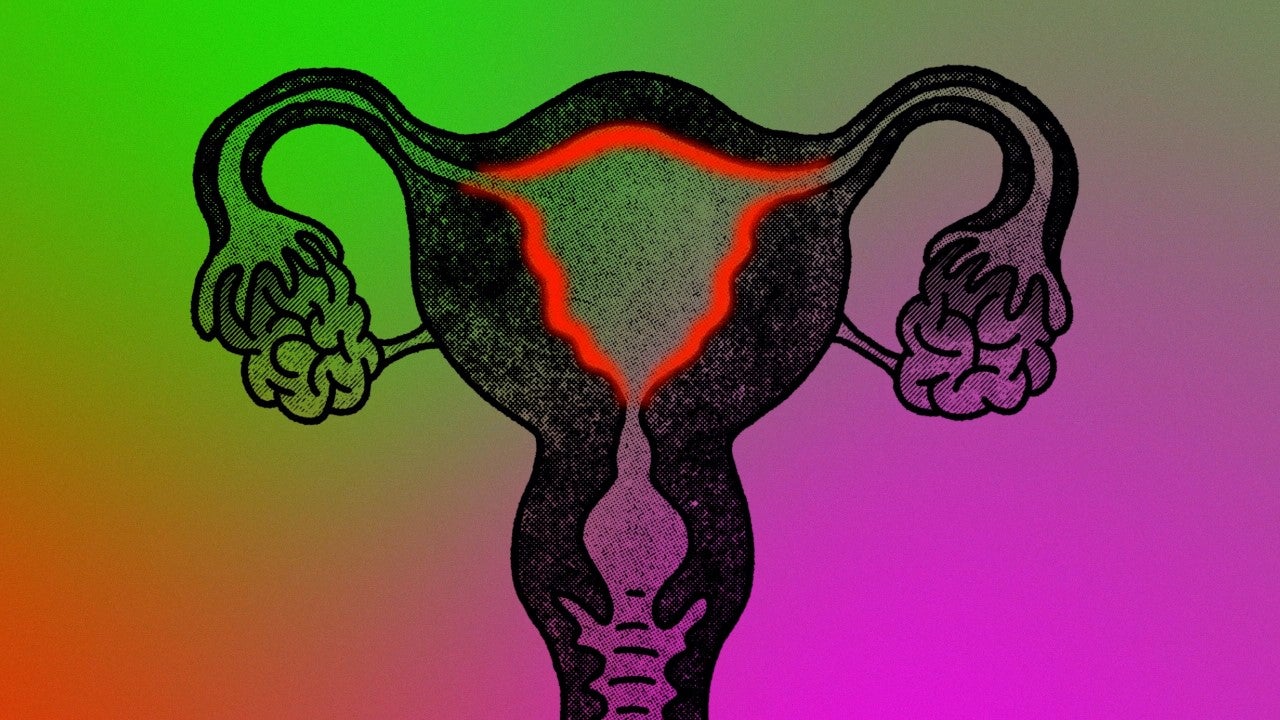
“Like little elves in my belly, just punching, kicking, beating up my organs.” This is how Shea O’Donnell, a psychology graduate student at San Diego State University, used to describe pain from a disease called endometriosis to their mom when they were 12 years old. Years later, they still contend with digestive issues, back pain, and abdominal and vaginal cramping, almost like a “very painful flu.”
It’s estimated that about one in 10 people who menstruate suffer from endometriosis, which occurs when tissue that grows in the uterus migrates to other parts of the body, becomes inflamed in response to cyclical hormonal changes and forms painful lesions.
People who have it deal with constant and irregular “flare-ups,” when symptoms become unbearable. Sufferers typically see four to five doctors over a period of about seven years before they get an accurate diagnosis, which can only be achieved through invasive surgery.
One recent study put the cost per patient in the year following diagnosis at more than $15,000, and that doesn’t even account for school missed and work opportunities delayed. There is still no cure.
In spite of how common and debilitating it is, research on endometriosis is severely underfunded—in large part because of stigma around menstrual problems and the normalization of female pain, experts say.
In the fourth episode of Scientific American’s documentary series A Question of Sex, we meet a data scientist and endometriosis patient who is working to fill those stark gaps.
Noémie Elhadad, an associate professor at Columbia University, remembers feeling like she had to be extremely private about her disease because it was directly tied to her period. “I would concoct crazy stories to explain why I had fainted in the subway in front of my friends when the obvious answer was ‘I faint from pain sometimes,’” she says.
Elhadad was told by doctors for years that the pain in her shoulder had nothing to do with her endometriosis when in fact it was the direct cause. While lesions are typically found in the abdomen, they have also been located in other parts of the body such as the lungs, brain and diaphragm.
“Too often in the past, people have thought that multiple problems are going on,” explains Hugh Taylor, a professor of obstetrics, gynecology and reproductive sciences at the Yale School of Medicine. “They have one problem. Let’s fix it.”
When Elhadad’s endometriosis began presenting at age 13, it would make her sick one week out of her menstrual cycle. By her late 30s, she would have just one good week. “I was dealing with this but also getting increasingly infuriated because it felt like there was no solution. Like I can’t go on like this, literally,” she says.
In 2016 she and her Ph.D. students at Columbia launched a research project called Citizen Endo and an app called Phendo designed to phenotype, or characterize, endometriosis. Currently, more than 15,000 users in several dozen countries use the app to track their symptoms and pain management techniques. Elhadad has also partnered with the period tracking app Clue to compare endometriosis with a healthy menstrual cycle.
In analyzing the data so far, Elhadad has been struck by how endometriosis seems to inflame the entire body, as well as by the amount of time that managing pain drains from people’s lives.
Laurie Beth Koller, an endometriosis patient in New York City, suffered with the disease for 10 years before she was diagnosed. She has had two surgeries, tried multiple medicines and birth controls, and now works with a pain specialist because of chronic nerve pain. She thinks of the disease as a particular state of being alone. “I think we as women don’t talk about what our bodies are going through,” Koller says. “And I think endometriosis is a prime example of that.”
Elhadad and her team hope that Phendo will not only contribute to a better clinical understanding of endometriosis but also help patients better manage their disease and communicate symptoms to their providers.
Other researchers are making strides as well: the first noninvasive test for endometriosis is on the horizon.
“It kind of reinforces this idea that if we understand better the menstrual cycle, we might actually help people in their well-being,” Elhadad says.
